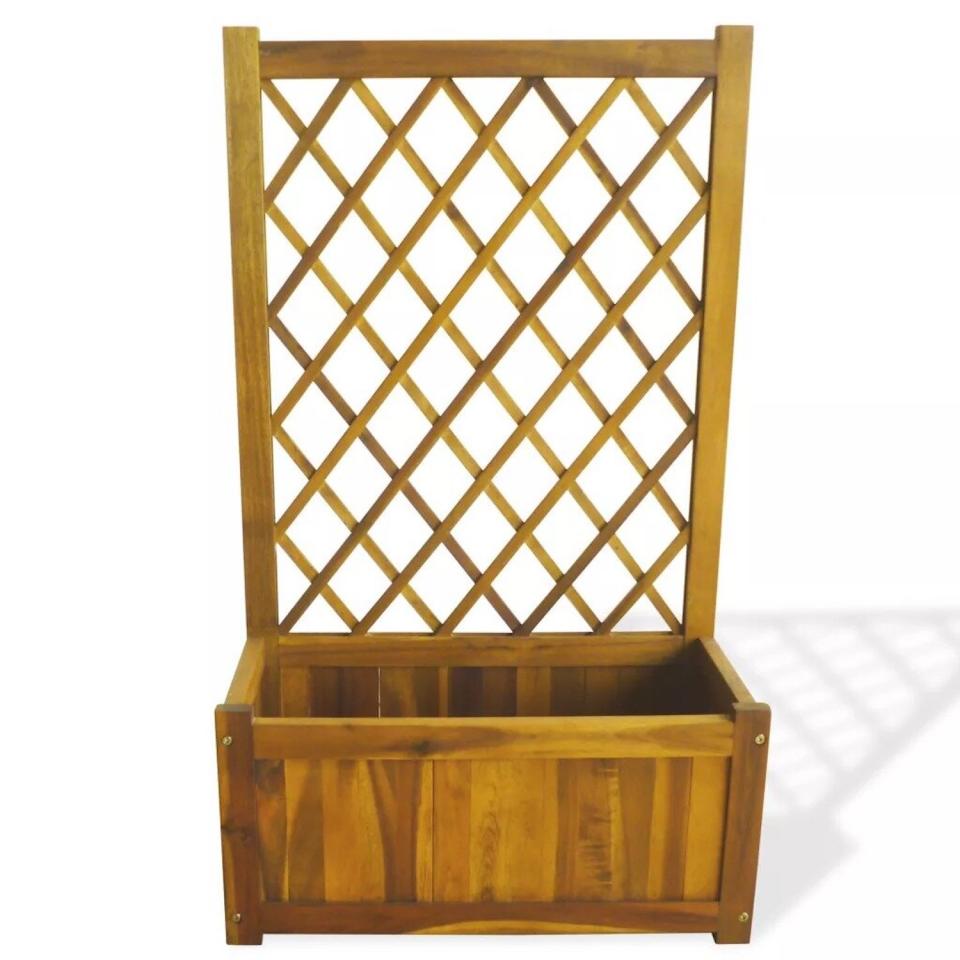Why You Should Use a Plant Trellis—Plus 6 to Buy
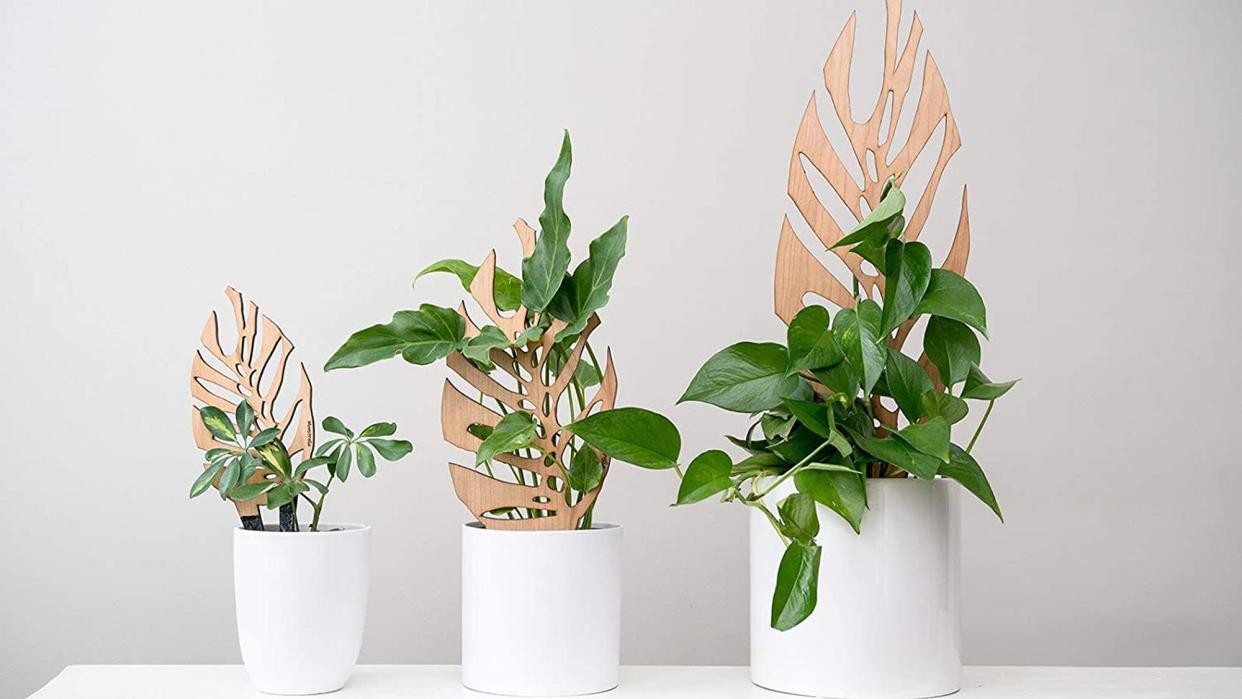
amazon.com
Your monstera has thrived this season, but now, it's starting to spread in an unwieldy manner. Your pothos is also drooping, since its vines have grown during the long summer days. It's time for a plant trellis—in fact, it's past time.
As the cooler months approach, a plant trellis will give your plants the support system they need. These plant supports provide a framework that's staked into your planter, installed on your wall, or attached to a planter box to give your flowering vines something to hold onto while they display their beauty. A plant trellis can also add visual interest to your growing houseplant collection or garden, taking their natural beauty up a notch.
We've rounded up the six best plant trellises, stakes, and planters that will keep your garden growing in style.
Monstrella by Treleaf
This monstera-inspired plant trellis is a piece of art as well as a support structure.13 Piece Bamboo Wall Trellis
If you're in the spirit to DIY your trellis, this is the pick for you.fruitsuper Plant Sticks Set
Need just a little support? Opt for these chic brass plant sticks.Heart and Round Garden Trellis by Mixxidea
An excellent pick for indoor and outdoor use, this metal trellis two-pack is only $11.Coco Coir Pole
This classic plant support pole is all-natural and biodegradable.Acacia Wood Trellis Planter
A simple yet well-made outdoor trellis planter for your vining perennials.
When to Use a Plant Trellis
Whether indoors or in your garden, a plant trellis will guide your plant to grow vertically and provide it with the support it needs to flourish. Pothos, philodendron, ivy, and other vining indoor houseplants can benefit from this type of support system. And in your outdoor garden, hydrangea, clematis, and ivy will happily climb a trellis planter.
For optimal growth guidance, install your freestanding plant trellis when your houseplant is young or freshly propagated. Without it, your pothos vines will droop and your Swiss cheese plant stems will spread. An overgrown monstera will still benefit from a plant trellis or stake, but once the stems start growing horizontally, it's difficult to upright them without causing damage. For this reason, installing a plant trellis or plant stakes early on in your houseplant's life will set it up for success.
RELATED: 9 Pretty Pothos Plants That Are (Almost) Impossible to Kill
If you're looking to grow vining perennials in your outdoor garden, opt for a sturdy trellis planter when you initially plant your seeds. As your plants bloom and grow, gently guide their vines through the attached trellis.
How to Use a Plant Trellis
There are different types of plant trellises, including freestanding ones, small and large archway ones, grid trellises, trellises that you mount on the wall, as well as trellis planters. While each one is a different size and shape, they are all used in similar ways. You can install a plant trellis at any time, but the sooner you begin to use one to guide your plant's growth, the better.
Place your freestanding plant trellis or stake firmly into the soil near the center of your planter, being careful not to disturb your plant's roots. You want your plant to gently lean on the trellis, so the closer you can get to your plant's center, the better. Once the trellis is in the soil, guide the vines or stems of your plant upward and weave them through the grid or curves. Some trellis planters will come with small ties or Velcro loops to help secure the vines or stems to the trellis during your initial placement. If they don't, you can use twine to fasten the stems to the trellis.
RELATED: 12 Stunning Philodendron Varieties You Need to Know About
If you want to secure your monstera or another spreading philodendron to a plant stake or trellis, select the widest, strongest stems and secure them to the support first. This will help upright the plant and ground it to the support system.
Read on for six plant trellis options that will give your plant the support it needs without sacrificing its style.
Monstrella by Treleaf
This monstera-inspired plant trellis not only provides support for your thriving plant, but it might just outshine it. Its unique handcrafted features make this plant support a work of art that could stand on its own. Based in Atlanta, Treleaf is a part of Amazon's Handmade shop, which shines the spotlight on local artisans and small businesses. The brand also offers other fun plant trellis shapes, such as a cactus and a palm-inspired trellis, with sizes ranging from 5 to 24 inches above the soil.
A good choice for: monstera deliciosa, other philodendrons, and pothos
How to use: Stake the trellis in the center of your planter and gently weave the vines or stems through the structure as you see fit. This trellis works best if you place it in front of your houseplant and weave the stems in from behind the framework. It comes with a small Velcro loop to help secure your plant.
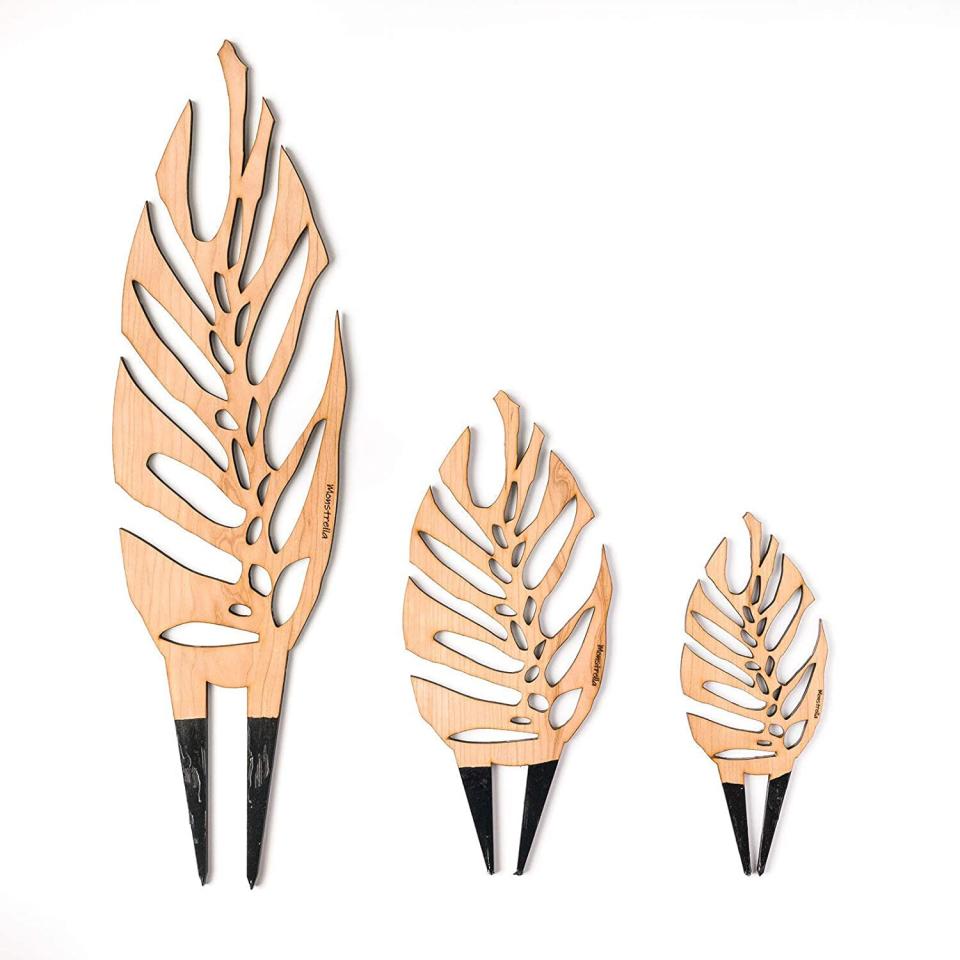
13 Piece Bamboo Wall Trellis
This adjustable bamboo wall trellis comes with 13 hoops, ranging in size from 6 to 10 inches, that can be hooked together to create the design of your choosing. Just attach your final product to the wall using the rings and hooks provided and place your plant beneath it.
A good choice for: vining plants such as pothos or overflowing ivy
How to use: This trellis must be assembled and secured to the wall. Place your vining plant beneath it and carefully weave the vines around the hoops so that they easily lay against the bamboo support.
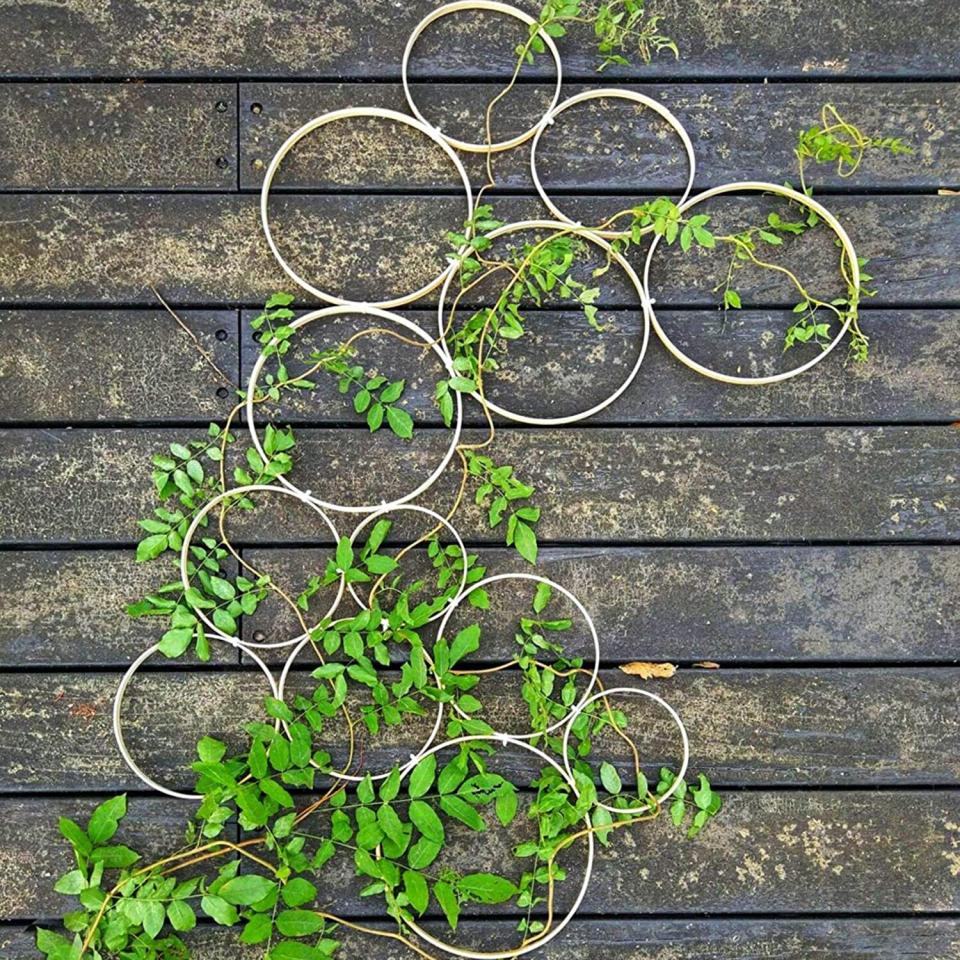
fruitsuper Plant Sticks Set
Does your plant need just a little upright support? Opt for this chic plant stick set by fruitsuper. This brass set includes three plant sticks that offer support through curves, arches, and loops with heights from 7 to 11 inches. They're designed in Seattle and assembled in L.A., so you (and your plant babies) will be supporting a West Coast local business.
A good choice for: orchids, single-stem plants, propagated plants gaining strength or any small vining plant such as a pothos or small philodendron
How to use: Place the stick in the soil close to the trunk or center of the plant. Drape the vine around the arch or lean the stem into the curve as you see fit. It's natural for the support stick to lean sideways in one direction while your plant flows over it in the opposite direction.
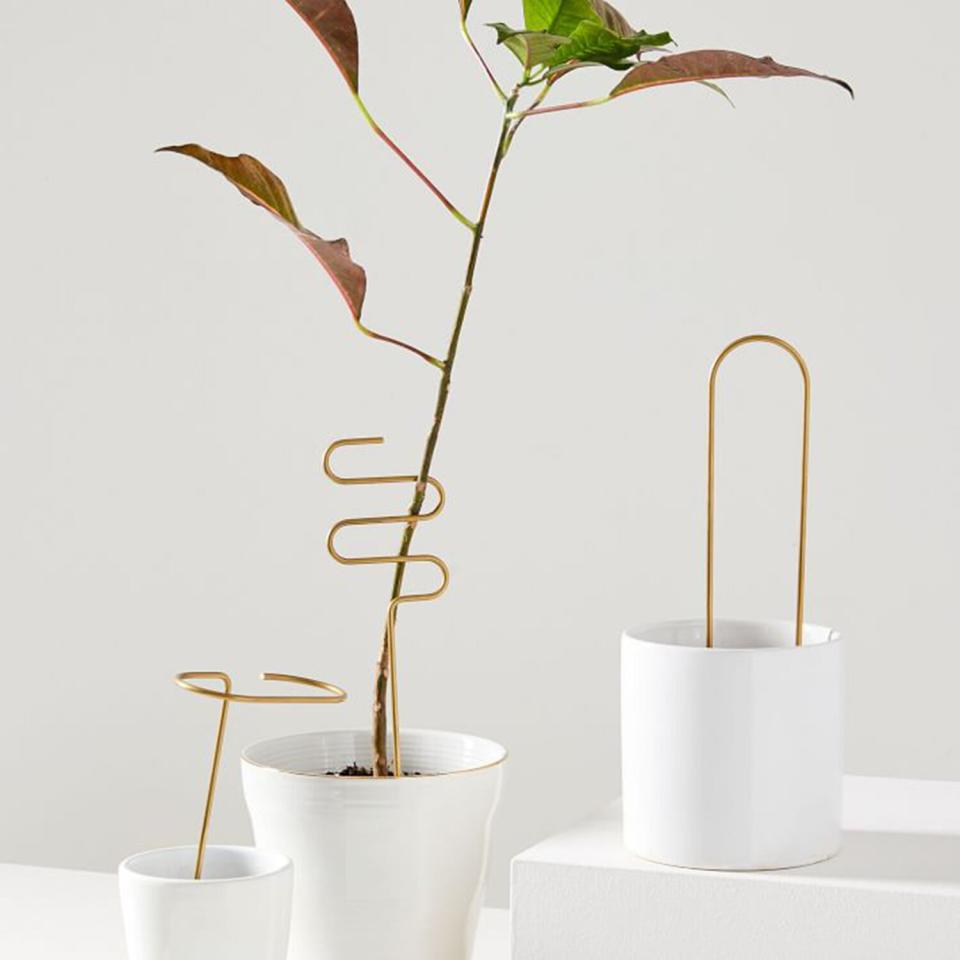
Heart and Round Garden Trellis by Mixxidea
This two-trellis set by Mixxidea comes with one round and one heart-shaped plant trellis. They're made of rust-proof iron, which makes them a good choice for both indoor and outdoor plants due to its weather-resistant qualities. They also come in other design variations, such as a HOME version and an I Heart You version, though none of them include a Velcro loop to secure your stems to the trellis, so you'll want to purchase some twine to hold the vines to the frame.
A good choice for: Indoor or outdoor vining plants, such as ivy or pothos
How to use: Place the trellis in the center of your planter. Gently twist the vines around the metal circle or heart and secure with twine.
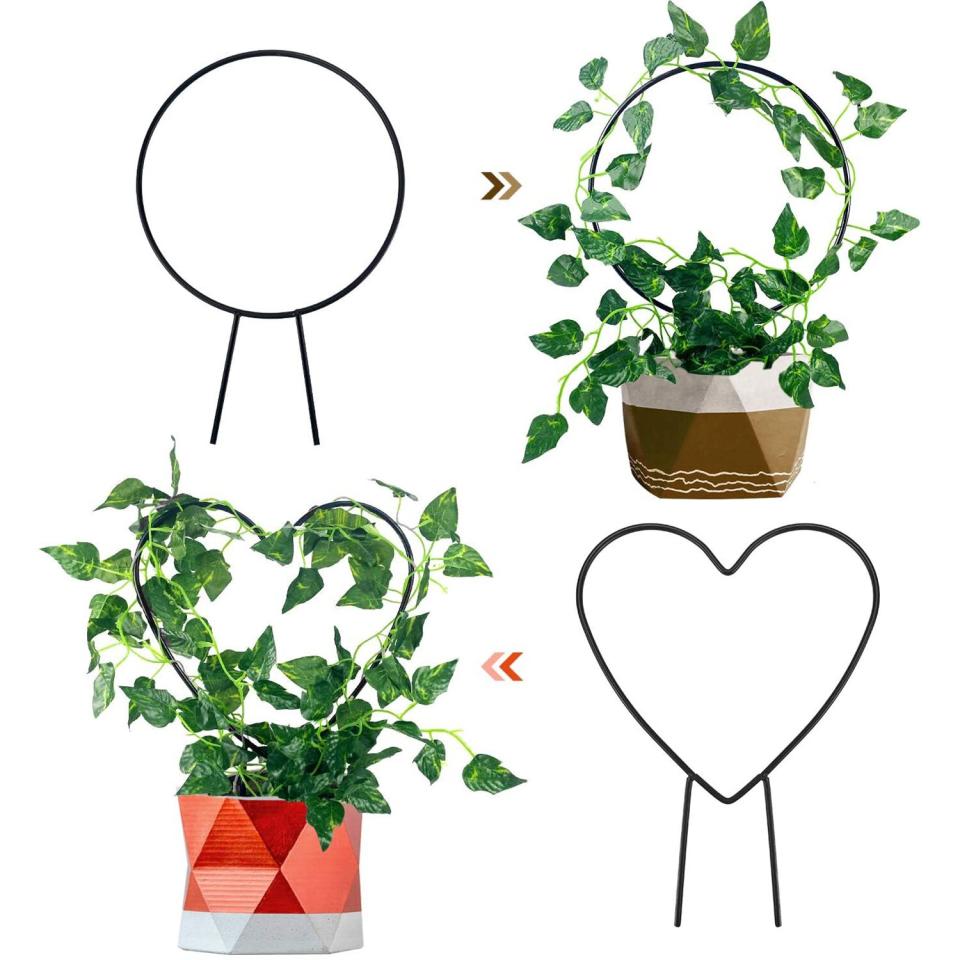
Coco Coir Pole
If your plant loves support and moisture, the Coco Coir Pole from The Sill might be a good option. Made of natural coconut husk with a solid wooden stake, this plant pole comes in two sizes and is stackable, so you can add on to your support base as your plant continues to grow.
A good choice for: monstera deliciosa or other philodendrons
How to use: Stake the pole as close to the center of your plant as possible. Use the twine included to attach the widest stem of your monstera along the pole at several points. When misting your plant, be sure to also mist the pole.
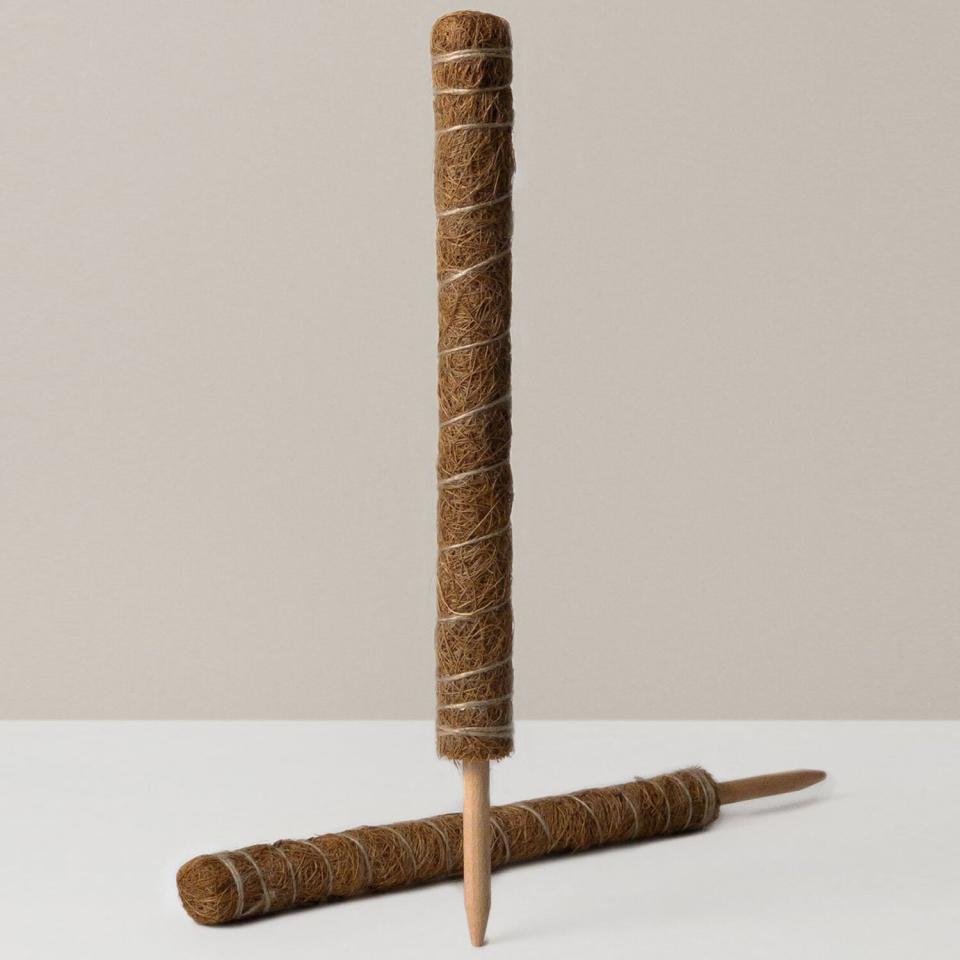
Acacia Wood Trellis Planter
If you're looking to add a trellis planter outdoors, this one made from acacia wood is a showstopper. It measures just above 3 feet tall and slightly under 2 feet wide, offering just enough area to serve as a focal point for your vining perennials without taking up too much space in your garden.
A good choice for: climbing hydrangea, clematis, and ivy
How to use: Plant as you normally would. As your plants begin to grow, gently weave them through the trellis support to encourage vertical growth.
